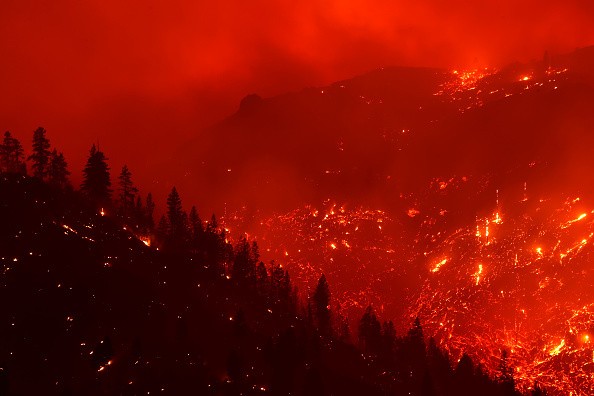New study reveals that raging flames impacted Antarctica 75 million years ago when dinosaurs still wandered the earth.

Wildfire in Antarctica
Antarctica's James Ross Island harbored tropical rainforests of conifers, ferns, and plant species known as angiosperms, as well as a large number of dinosaurs, during the late Cretaceous period (100 million to 66 million years ago), one of the warmest eras on Earth.
But it wasn't all sunshine and roses; ancient pale fires impacted portions of those forests, leaving charcoal residues that scientists have now collected and analyzed.
In a statement, study lead researcher Flaviana Jorge de Lima, a paleobiologist at the Federal University of Pernambuco in Recife, Brazil, said, "This discovery expands the knowledge about the occurrence of vegetation fires during the Cretaceous, showing that such episodes were more common than previously imagined."
The discovery is the first indication of a paleo-fire on James Ross Island, which is located in South America and is part of the Antarctic Peninsula.
According to a study published in the journal Palaeogeography, Palaeoclimatology, Palaeoecology, the discovery adds to claims that spontaneous fires were frequent in Antarctica during the Campanian age (about 84 million to 72 million years ago).
How Common was the Forest Fire?
A multinational team of experts evaluated fossils obtained during a 2015-2016 trip to James Ross Island's northeastern region for the new study. These fossils comprised plant bits that seemed to be a charcoal residue that had worn away over millions of years.
The charcoal bits were comparatively small, measuring just 0.7 by 1.5 inches in the biggest paper-thin pieces (19 by 38 millimeters).
However, photos taken using a scanning electron microscope showed their true identities: The researchers discovered that the fossils are most likely burnt gymnosperms from the Araucariaceae (botanical family of coniferous trees).
During the late Cretaceous, massive forest fires were common and widespread, according to the researchers. The majority of the evidence for these blazes is found in the Northern Hemisphere, with a few known examples in the Southern Hemisphere in what is now Tasmania, New Zealand, and Argentina.

Volcanic Activity During the Cretaceous Period
The Gondwana landmass began splitting apart in the late Cretaceous, leaving areas like Antarctica more isolated than before. The researchers found that there were plenty of ignition sources in this ice-free zone, including lightning strikes, fireballs from falling meteorites, and volcanic activity, as well as combustible plants and high oxygen levels, which assist flames burn.
During the Cretaceous, Antarctica had severe volcanic activity triggered by tectonics, the scientists stated in the report. This is supported by the existence of fossil remnants in layers connected to ash drops.
It's possible that volcanic activity sparked the palaeo-wildfire that resulted in the charcoal found in this study. The researchers are now searching for further evidence of pale fires in other parts of Antarctica.
Related Article : Scorched Earth Left Behind by Blazing Wildfires May Cause More Disasters
For more news, updates about wildfires and similar topics don't forget to follow Nature World News!
© 2025 NatureWorldNews.com All rights reserved. Do not reproduce without permission.





